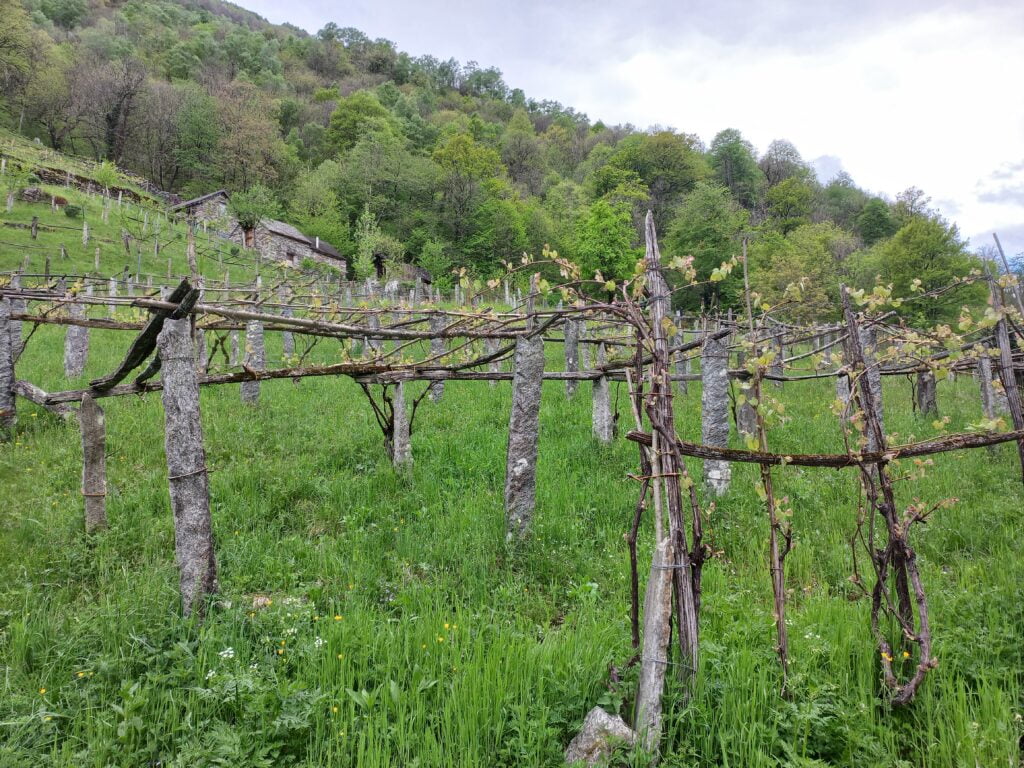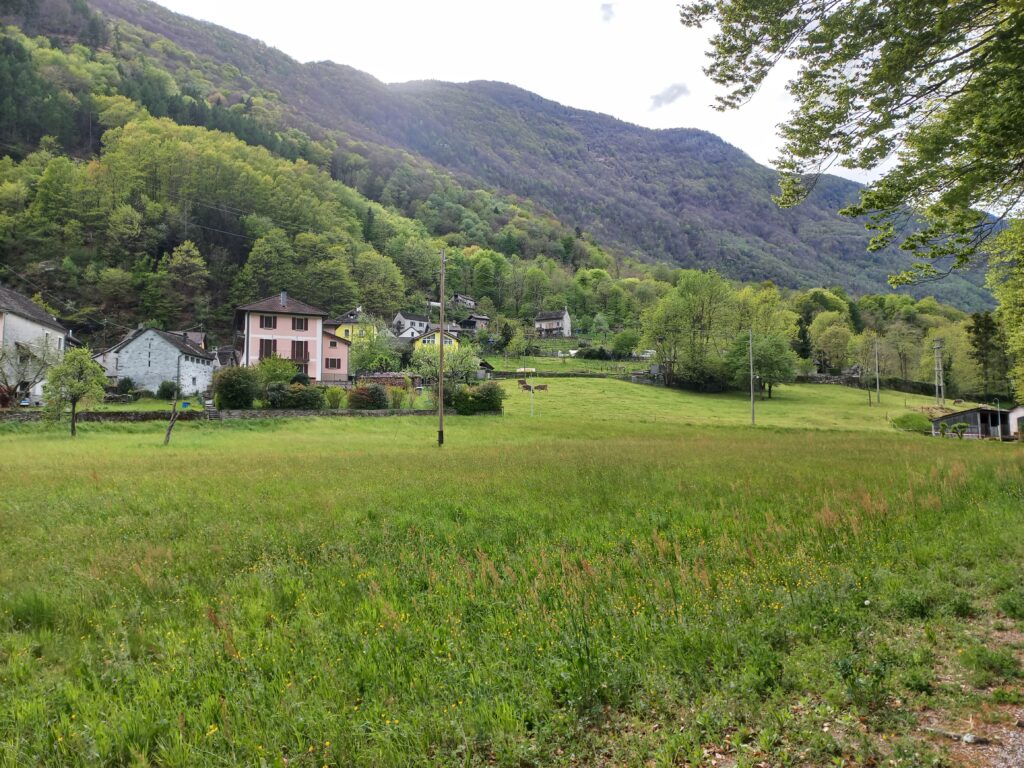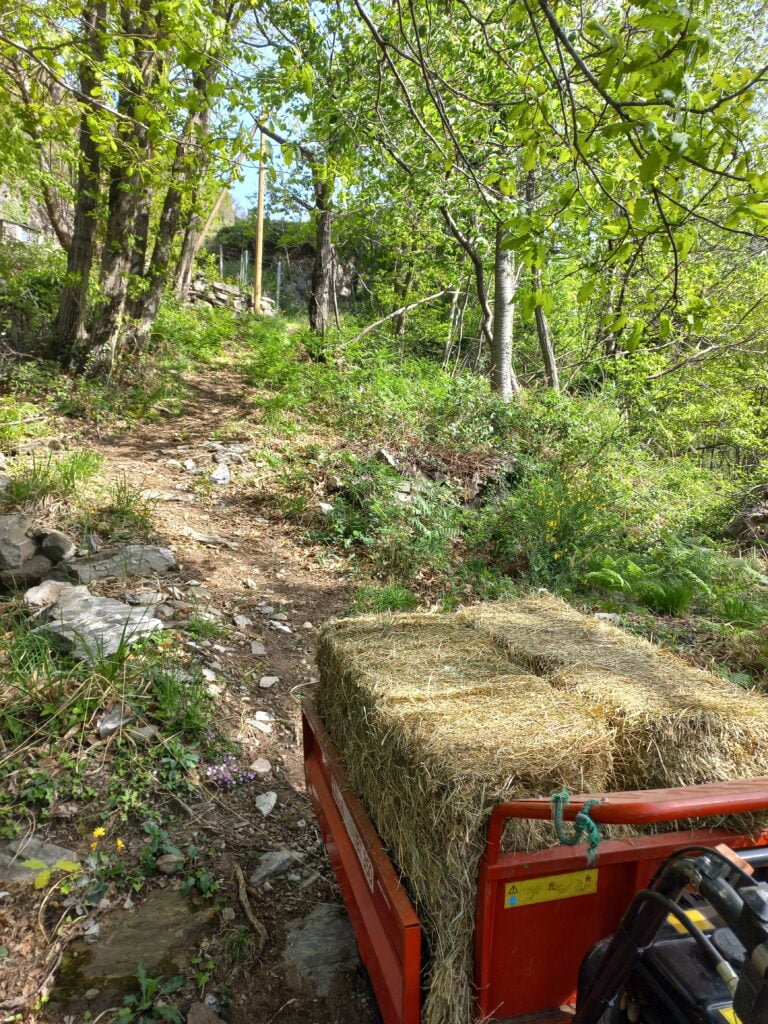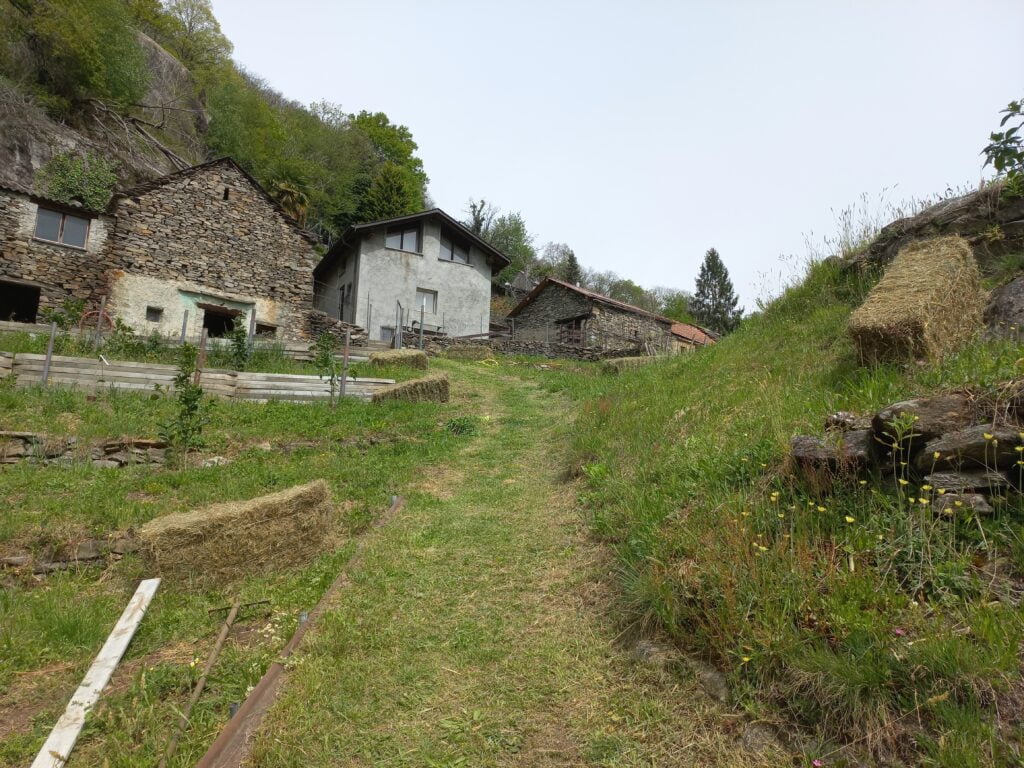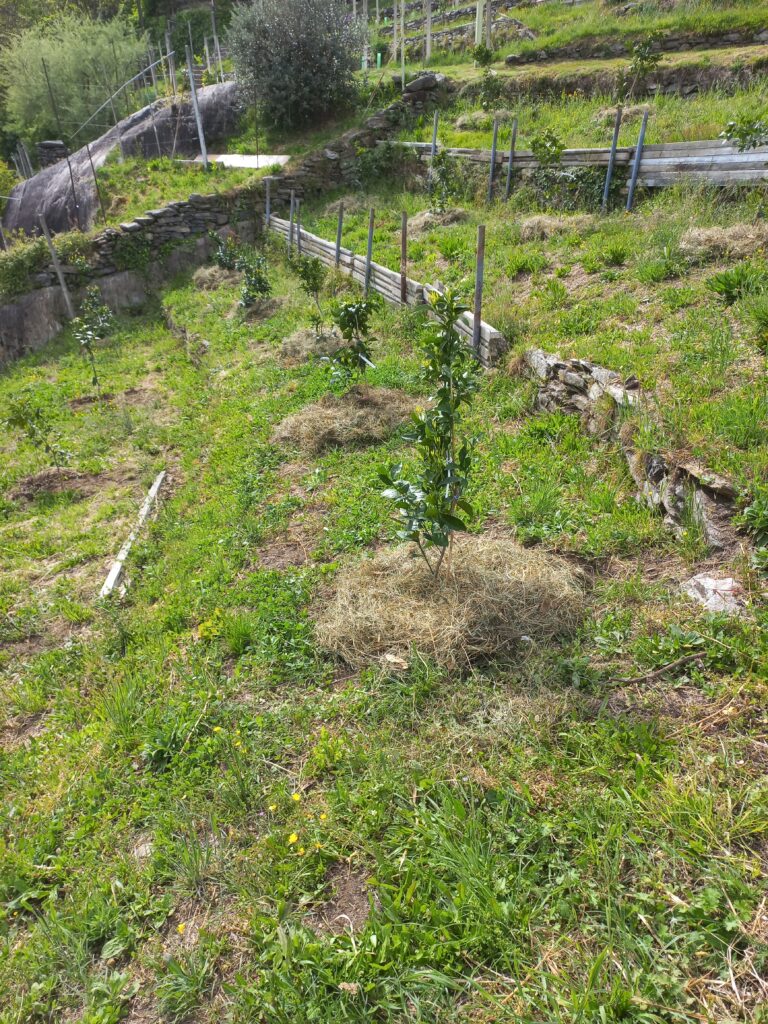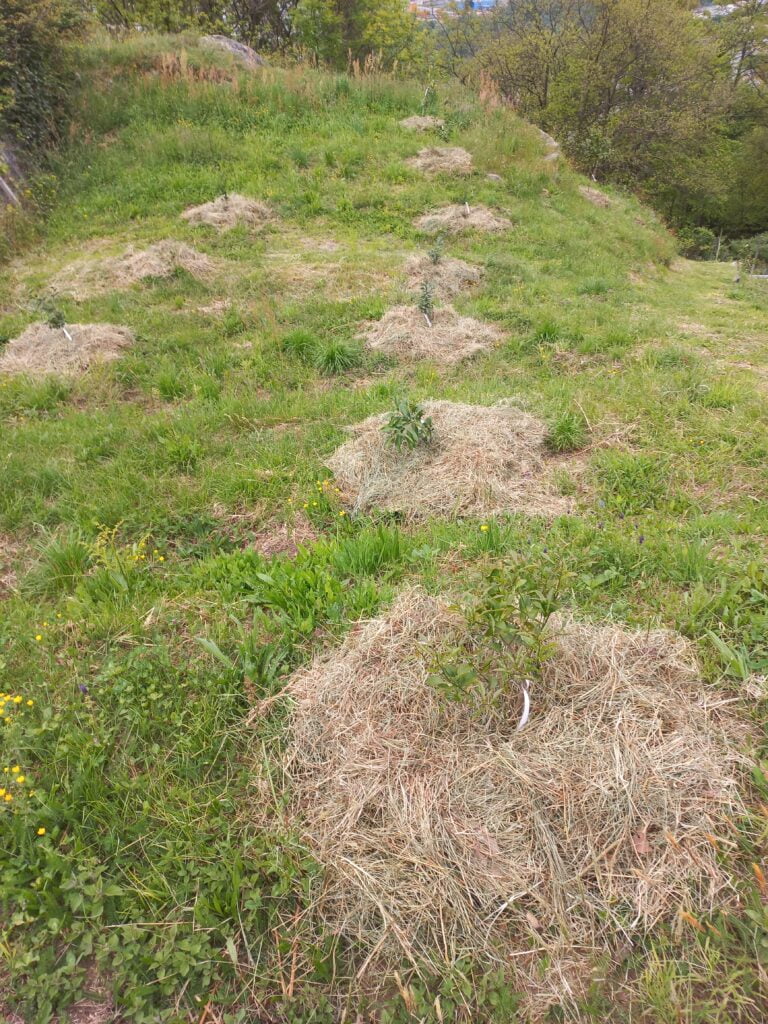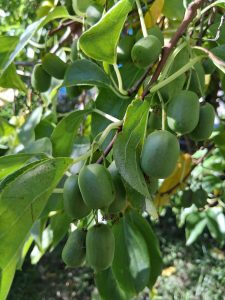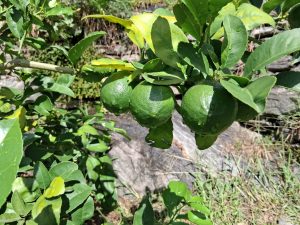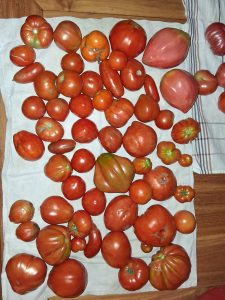Once you’ve finished planting the new citrus plot, it’s important to mulch each tree properly as soon as possible. The weather was dry, exceptionally cold and very windy in the second half of April. A thick mulch will prevent the plants from drying out and allow for more frequent watering.
The first step is to find hay. Direction Val Maggia.

